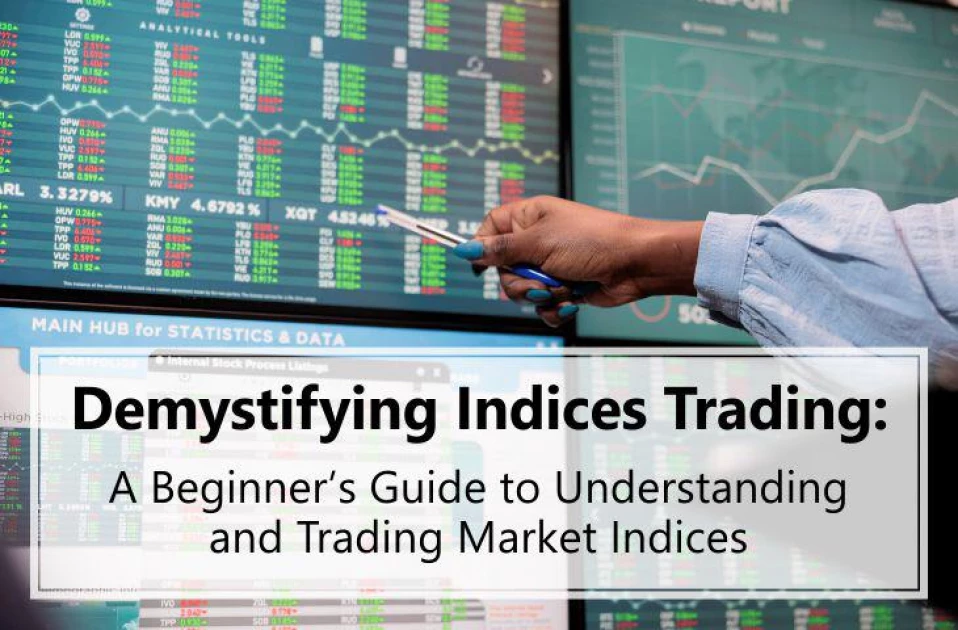Demystifying Indices Trading: A Beginner’s Guide to Understanding and Trading Market Indices


Audio By Vocalize
This post aims to demystify trading indices, providing a beginner’s guide to understanding and successfully trading market indices.
Understanding Market Indices
What are market indices?
A market index refers to a hypothetical collection of securities that accurately reflects a specific market or sector. For instance, the S&P 500 symbolizes the leading 500 companies in America, while the FTSE 100 represents London Stock Exchange’s top 100 listed corporations.
Why Trade Indices?
Trading in indices enables traders to speculate on the overall performance of an entire economy or sector, eliminating the need for choosing specific stocks. This can lead to diversification advantages and mitigate any negative impact from one company’s underperformance.
How Indices Trading Works
Trading Indices via CFDs
Contracts for difference (CFDs) are a popular technique for indices trading. When you trade indices using CFDs, you are betting on the index’s price movement without owning the underlying assets. This opens the possibility of profiting from both rising and declining markets.
Long and Short Trading
In indices trading, you take either a ‘long’ or a ‘short’ position, anticipating the index to increase or decrease. This adaptability enables traders to benefit from changing market circumstances.
Leverage in Indices Trading
Leverage enables traders to manage a huge position with a modest investment. While leverage can increase earnings, it can also increase losses, making risk management critical.
Unique Strategies for Successful Indices Trading
Volatility Trading
This technique takes advantage of the index’s volatility by entering trades during moments of higher price volatility. Traders can profit from predicted price changes in the index by using options, futures, or other derivative products.
Pair Trading
Pair trading entails holding long and short bets simultaneously in two connected indexes or equities. Traders hope to benefit from the relative performance of the two instruments independent of market direction.
Range Trading
Range trading entails spotting price ranges or consolidation patterns in the price chart of an index. Within the set range, traders want to purchase around support levels and sell near resistance levels. This technique aims to benefit from price fluctuations inside a certain range.
Correlation Trading
The connection between the index and other associated assets or variables, such as particular industries, commodities, or economic indicators, is examined in this method.
Traders can enter positions in the index based on the expected influence of these correlated elements to profit from their connection.
Our Final Thoughts
Indices trading provides a unique chance to speculate on the larger market, potentially delivering diversification advantages and the possibility to profit from various market scenarios.
Regardless of your unique indices trading strategy, you must understand and continuously improve your chosen method.
In our experience, you can traverse the world of indices trading and reach your trading objectives by combining smart trading tactics with strong risk management. However, we urge traders to remember that successful trading entails earning gains and effectively managing losses.
Also read: How Safe Is Forex Trading In Kenya?


Leave a Comment